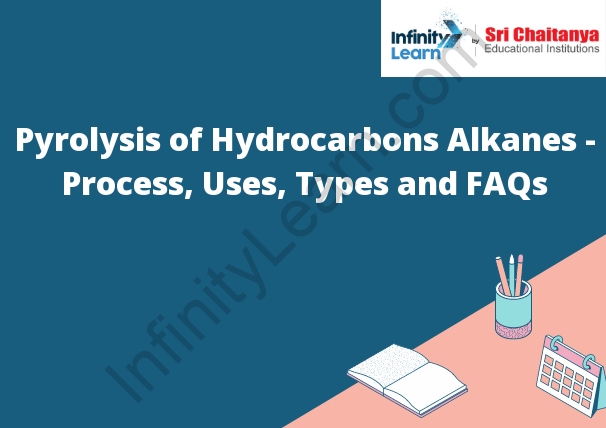Table of Contents
What is Pyrolysis?
Pyrolysis is the thermochemical decomposition of organic material at elevated temperatures in the absence of oxygen.

Pyrolysis Process
Pyrolysis is the thermal decomposition of organic material at elevated temperatures in the absence of oxygen. The process produces a variety of products, including gases, liquids, and solids.
The organic material is heated until it breaks down into molecules of hydrogen, carbon, and oxygen. The hydrogen and carbon escape as gases, while the oxygen combines with the other elements to form solids. The solids are often called char or black carbon.
Pyrolysis of Alkanes
Pyrolysis is the thermal decomposition of organic molecules, often in the presence of an external heat source. In the presence of oxygen, pyrolysis of organic molecules produces carbon dioxide and water vapor. In the absence of oxygen, pyrolysis of organic molecules produces carbon monoxide and hydrogen.
Pyrolysis of alkanes is the thermal decomposition of alkanes in the presence of an external heat source. In the presence of oxygen, pyrolysis of alkanes produces carbon dioxide and water vapor. In the absence of oxygen, pyrolysis of alkanes produces carbon monoxide and hydrogen.
Uses of Alkanes
The alkanes are a group of hydrocarbons that have only single covalent bonds between the carbon atoms. They are the simplest hydrocarbons, and because of this they are used in a vast number of applications.
Some of the most common uses of alkanes include:
-As fuel for vehicles
-As a component of lubricants
-In the production of plastics
-In the production of detergents
-As a component of explosives
Process of Cracking or Pyrolysis
The process of cracking or pyrolysis is the breaking down of a large molecule into smaller molecules by heat. Cracking is used to produce gasoline, diesel fuel, and other petroleum products from crude oil. Pyrolysis is used to produce charcoal, bio-oil, and other products from biomass.
Cracking is of Two Types
1. Thermal cracking
2. Catalytic cracking
Thermal cracking is a type of cracking that occurs due to the increase in temperature of the hydrocarbons. Catalytic cracking is a type of cracking that occurs due to the presence of a catalyst.
Applications of Pyrolysis
- Pyrolysis is used to produce a number of different products, including biochar, ethanol, and methanol.
- Biochar is a product of pyrolysis that is made from organic materials. It is used as a soil amendment to improve soil health and to sequester carbon.
- Ethanol is a product of pyrolysis that is made from corn or other biomass. It is used as a fuel additive to increase fuel efficiency and to reduce emissions.
- Methanol is a product of pyrolysis that is made from biomass. It is used as a fuel additive to increase fuel efficiency and to reduce emissions.
Difference between Pyrolysis and Combustion
Pyrolysis is a chemical reaction that breaks down a material into smaller molecules by heating it without oxygen. Combustion is a chemical reaction that combines oxygen with a material to create heat and light.
Difference between Pyrolysis and Gasification
Pyrolysis is the thermal decomposition of a material in the absence of oxygen. Gasification is the thermal decomposition of a material in the presence of oxygen.
Conversion of Petroleum using Pyrolysis
Pyrolysis is the thermal decomposition of a material in the absence of oxygen. The word is derived from the Greek pyr, meaning “fire,” and lysis, meaning “to break up.”
Pyrolysis of petroleum produces a variety of products, including gases, liquids, and solids. The gases produced include hydrogen, methane, ethane, and propane. The liquids produced include gasoline, diesel fuel, kerosene, and heavy fuel oil. The solids produced include coke, tar, and asphalt.








